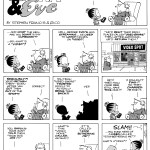Goldman Sachs Group will release new details about how and where it makes money, a shot of transparency it hopes will win over sceptical investors and boost a stock price stuck in neutral.
An overhaul of the bank’s financial disclosures will peel back the curtain on Goldman’s lending and proprietary bets and reshape its quarterly reports to investors to look more like those of peers JPMorgan Chase & Co. and Bank of America Corp. , whose shares are more richly valued by investors.
The changes are the latest effort by Goldman to shed some of its signature secrecy. For many investors, the changes are long overdue, though it remains to be seen whether they will generate enthusiasm for a stock that hasn’t grown meaningfully since 2007.
Chief Executive David Solomon and his team have privately griped about the stock’s decadelong sideways bounce. At an off-site last year, Solomon and his No. 2 executive, John Waldron, told Goldman’s partners they believed the stock, worth $200 a share at the time and now around $230, could trade at $400 or more, according to attendees. Goldman executives get a big portion of their annual pay in shares.
Later this month, Goldman will hold its first investor day, where it will lay out a blueprint for growth and new metrics it aims to hit. The latest changes are the first glimpse, reorganizing the bank’s business around four pillars: services for corporate clients, trading firms, money managers and individuals.
The last time Goldman made major changes to its financial disclosures, it was from a position of weakness. Seeking to beat back criticism that it had abused its muscle and trading savvy to profit at the expense of clients, the bank in 2011 started disclosing how much money it made investing for its own account.
That gave rise to its “investing and lending” segment, a roughly $130 billion grab bag of loans and proprietary bets that shareholders never warmed to. Goldman is now nixing that segment and will instead give more details about those holdings.
Loans to companies—still a small business, but one Goldman has been growing—will be reported alongside other corporate fees from advising on mergers and underwriting initial public offerings. Loans to hedge funds will be broken out in Goldman’s trading arm.
A new division will track revenue from wealth management, where the firm is branching out beyond billionaires to younger and less-wealthy clients.



















 Become an Insider
Become an Insider